John Scrimgeour of Myres Castle near Falkland, Fife was Master of Work for royal buildings for James V and Mary, Queen of Scots, and Precentor of the Scottish Chapel Royal.
Contents

John Scrimgeour of Myres Castle near Falkland, Fife was Master of Work for royal buildings for James V and Mary, Queen of Scots, and Precentor of the Scottish Chapel Royal.

He and his father held their lands by right of an hereditary office as sergeant-of-arms or macer to the King of Scotland. [1] John Scrimgeour kept the building accounts for most of the works of James V from 1529, especially for Falkland Palace and Holyroodhouse, and most of these accounts survive. As well as supervising building work and contracts, Scrimgeour was also involved in collected taxes, mostly from church lands, which James V had allocated to the works. [2]
From a tax on church lands granted to James V for his expenses in France, from October 1536 to September 1538, Scrimgeour received £4996-7s-10d Scots. [3]
Scrimgeour was briefly eclipsed between 1538 and 1540 when Sir James Hamilton of Finnart was appointed Principal Master of Work with higher authority, and again in the first years of the regency of James Hamilton, 2nd Earl of Arran who employed a kinsman, John Hamilton of Milnburn. During the war of the Rough Wooing, in October 1545 Scrimgeour became the treasurer of a force of 1000 border horseman, administering a tax of £18,000 raised for their wages. He was to spend three months in the Merse and Teviotdale attending the musters of this defence force. [4]
A case was brought against Scrimgeour in the Stewartry Court of Fife, held in Falkland Palace on 9 February 1548, when William Bonair of Rossy disputed his rights to the lands of Glasstullo. [5]
In September 1553 he spent £2333-6s-8d on Arran's building works. [6] Subsequently he was employed by Mary of Guise and her daughter, Mary, Queen of Scots. [7] He seems to have died in the year 1563. He was succeeded by sir William MacDowall, who had long been a clerk in the works. [8]
The National Library of Scotland has a volume of heraldic writings which belonged to John Scrimgeour, including a bestiary. The text of The Deidis of Armorie also includes advice for heraldic officers, including the Captains of castles and towns, who were instructed to keep certain and sure watch both day and night for fear of the return of plague. [9]
Scrimgeour was married to Helen Little or Littil. Their children included a son, William. [10]
Scrimgeour and Littil owned a tenement in Edinburgh from which they paid an annualrent to the altar of St Laurence in St Giles' Kirk. [11]
Scrimgeour supervised the construction of timber 'lists', barriers, and a stand for a tournament at St Andrews in May and June 1538. This was in preparation for the formal reception of Mary of Guise. [12] A series of building accounts for the Royal Palaces of James V written by Scrimgeour for audit purposes between 1529 and 1541 survive in the National Archives of Scotland. These were published in full in 1957, and record projects at Holyroodhouse, Stirling Castle, Edinburgh Castle, Falkland Palace, Linlithgow Palace, and other lesser works. [13]
A letter from John Scrimgeour to Mary of Guise of uncertain date reveals that she took an interest in the details of building works. She had asked him to inspect her lodging in Edinburgh (perhaps at Castlehill at the top of the Royal Mile) with glaziers and slaters. The building was found to require attention. Scrimgeour hired a slater to fix the roof, a glazier, and other craftsmen. He had also sent lead to Falkland Palace to mend the roof, after the winter frosts had passed. He intended to inspect Falkland Palace and spent 8 days there. He asked her to issue a proclamation ordering carters to carry stones and bring timber from Leven or Levenmouth. His son would remain in Edinburgh and supervise work on her lodging. [14]

James V was King of Scotland from 9 September 1513 until his death in 1542. He was crowned on 21 September 1513 at the age of seventeen months. James was the son of King James IV and Margaret Tudor, daughter of Henry VII of England. During his childhood Scotland was governed by regents, firstly by his mother until she remarried, and then by his first cousin once removed, John Stewart, Duke of Albany. James's personal rule began in 1528 when he finally escaped the custody of his stepfather, Archibald Douglas, 6th Earl of Angus. His first action was to exile Angus and confiscate the lands of the Douglases.

Mary of Guise, also called Mary of Lorraine, was Queen of Scotland from 1538 until 1542, as the second wife of King James V. She was a French noblewoman of the House of Guise, a cadet branch of the House of Lorraine and one of the most powerful families in France. As the mother of Mary, Queen of Scots, she was a key figure in the political and religious upheaval that marked mid-16th-century Scotland, ruling the kingdom as queen regent on behalf of her daughter from 1554 until her death in 1560.

The ruins of Linlithgow Palace are located in the town of Linlithgow, West Lothian, Scotland, 15 miles (24 km) west of Edinburgh. The palace was one of the principal residences of the monarchs of Scotland in the 15th and 16th centuries. Although maintained after Scotland's monarchs left for England in 1603, the palace was little used, and was burned out in 1746. It is now a visitor attraction in the care of Historic Environment Scotland.
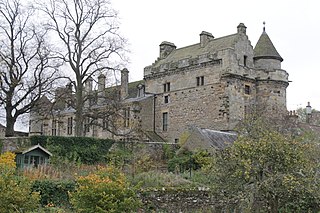
Falkland Palace, in Falkland, Fife, Scotland, is a royal palace of the Scottish Kings. It was one of the favourite places of Mary, Queen of Scots, who took refuge there from political and religious turmoil of her times.
William Schaw was Master of Works to James VI of Scotland for building castles and palaces, and is claimed to have been an important figure in the development of Freemasonry in Scotland.
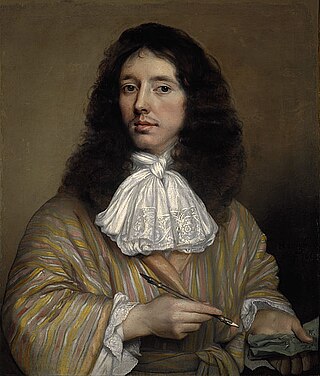
The Master of Works to the Crown of Scotland was responsible for the construction, repair and maintenance of royal palaces, castles and other crown property in Scotland. The main buildings were; Holyroodhouse; Edinburgh Castle; Stirling Castle; Linlithgow Palace; and Falkland Palace. The position was roughly equivalent to that of Surveyor of the King's Works in the English Royal Household. The emergence of the position reflected a shift in responsibility from the masons, or administrators in holy orders, to designers with little hands-on knowledge of stonemasonry. Earlier holders of the office were often courtiers: James Hamilton of Finnart was the king's kinsman; John Scrymgeour was a heraldic expert; while William Schaw, an administrator, was a key figure in the development of Freemasonry, itself a 'craft' having little to do with building. Later holders filled a role similar to that of architects in the modern sense. Some Masters were craftsmen; Robert Robertson, who was master of work at Stirling Castle after the execution of the aristocrat Hamilton of Finnart, was a carpenter. During the reign of James V there was also a Principal Master Wright or carpenter, John Drummond of Milnab, and as well as building works he was concerned with the artillery and its logistics.

The Palace of Holyroodhouse, commonly referred to as Holyrood Palace or Holyroodhouse, is the official residence of the British monarch in Scotland. Located at the bottom of the Royal Mile in Edinburgh, at the opposite end to Edinburgh Castle, Holyroodhouse has served as the principal royal residence in Scotland since the 16th century, and is a setting for state occasions and official entertaining.
Lady Jean Stewart, was an illegitimate daughter of King James V of Scotland by his mistress, Elizabeth Bethune.
William MacDowall was a Scottish priest and Master of Works to Mary, Queen of Scots, her mother Mary of Guise, and James VI of Scotland. The title 'sir' was used in Scotland by a priest without a master's degree. The name appears variously as McDowgall, McDougall, McDowall etc., in printed records, he signed accounts MAKDOUELL.

The Scottish royal tapestry collection was a group of tapestry hangings assembled to decorate the palaces of sixteenth-century kings and queens of Scotland. None appear to have survived.
John Drummond of Milnab was a 16th-century Scottish carpenter in charge of the woodwork of the palaces, castles and guns of James IV of Scotland and James V of Scotland.

Andrew Mansioun, or Mentioun or Manschone or Manson, was a French artist who worked at the court of James V, King of Scots. He was the master carpenter of the Scottish artillery for Mary, Queen of Scots and James VI of Scotland.

Robert Beaton of Creich was a Scottish landowner and courtier. He served as a Master of Household to Mary, Queen of Scots.
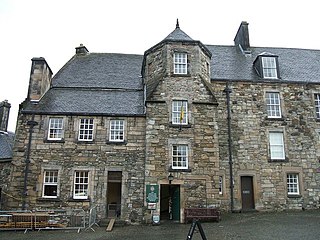
Walter Merlioun, was a Scottish master mason based in Edinburgh.

Robert Hamilton of Briggis was a Scottish soldier and military engineer. He was keeper of Linlithgow Palace and Dunbar Castle and was Master of the Scottish artillery.

Nicolas Roy was a French stone mason who worked in Scotland for James V and his second wife Mary of Guise.
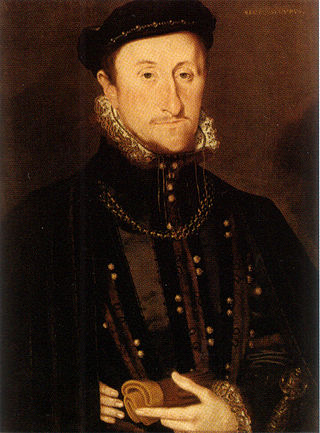
James Barroun or Baron was a wealthy Scottish merchant based in Edinburgh and supporter of the Scottish Reformation.
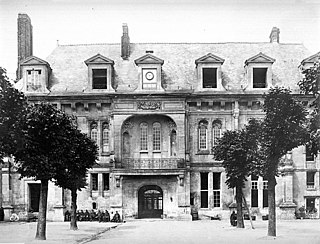
Bartolomew de Villemore was a French courtier and administrator to Mary of Guise, the mother of Mary, Queen of Scots.
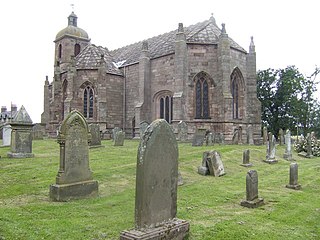
Thomas Peebles or Peblis was a Scottish glazier who worked for James IV, Margaret Tudor, and James V of Scotland.
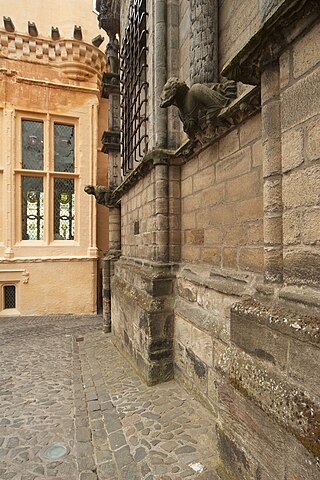
William Hill was a Scottish blacksmith and fabricator of works in iron for James V of Scotland.